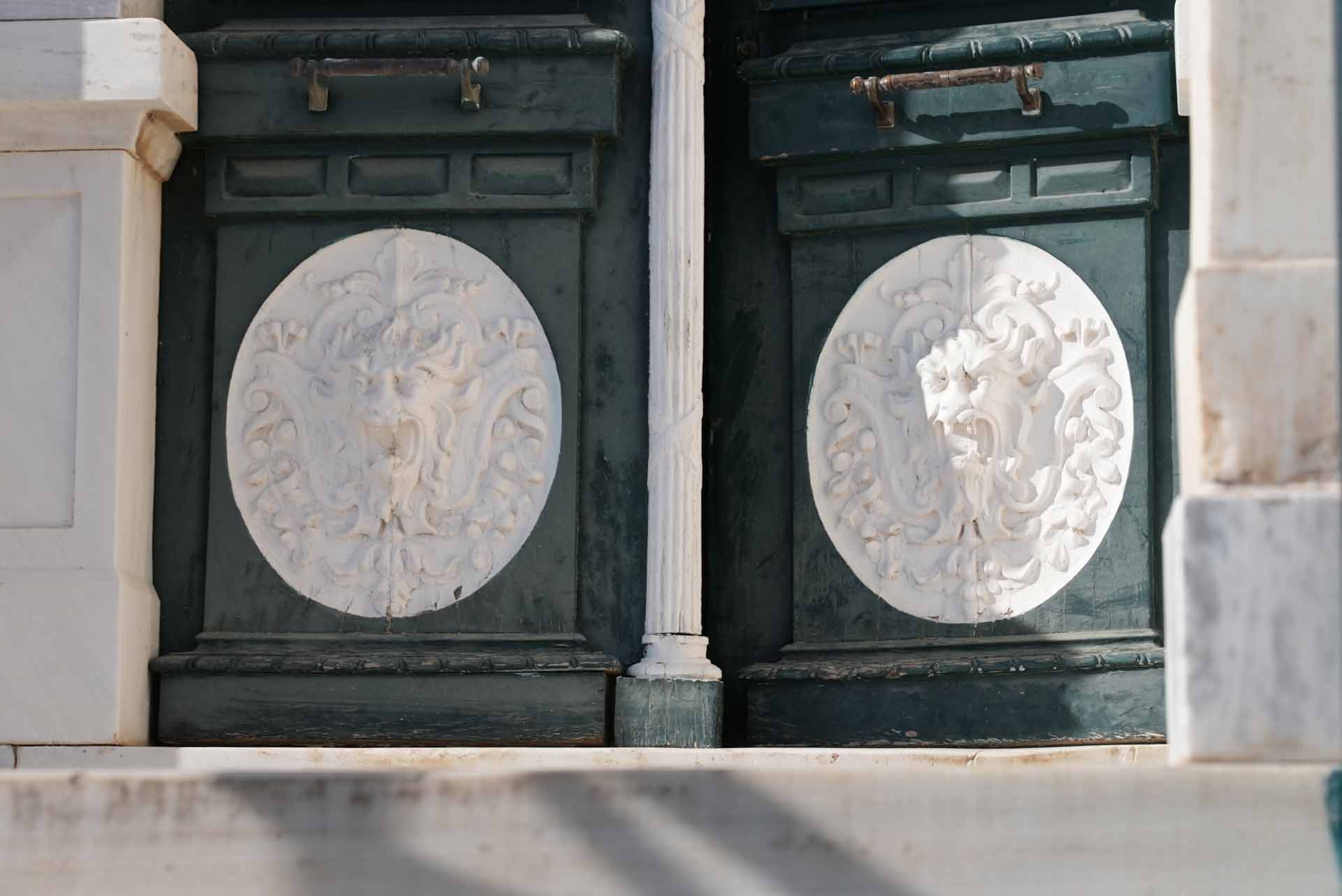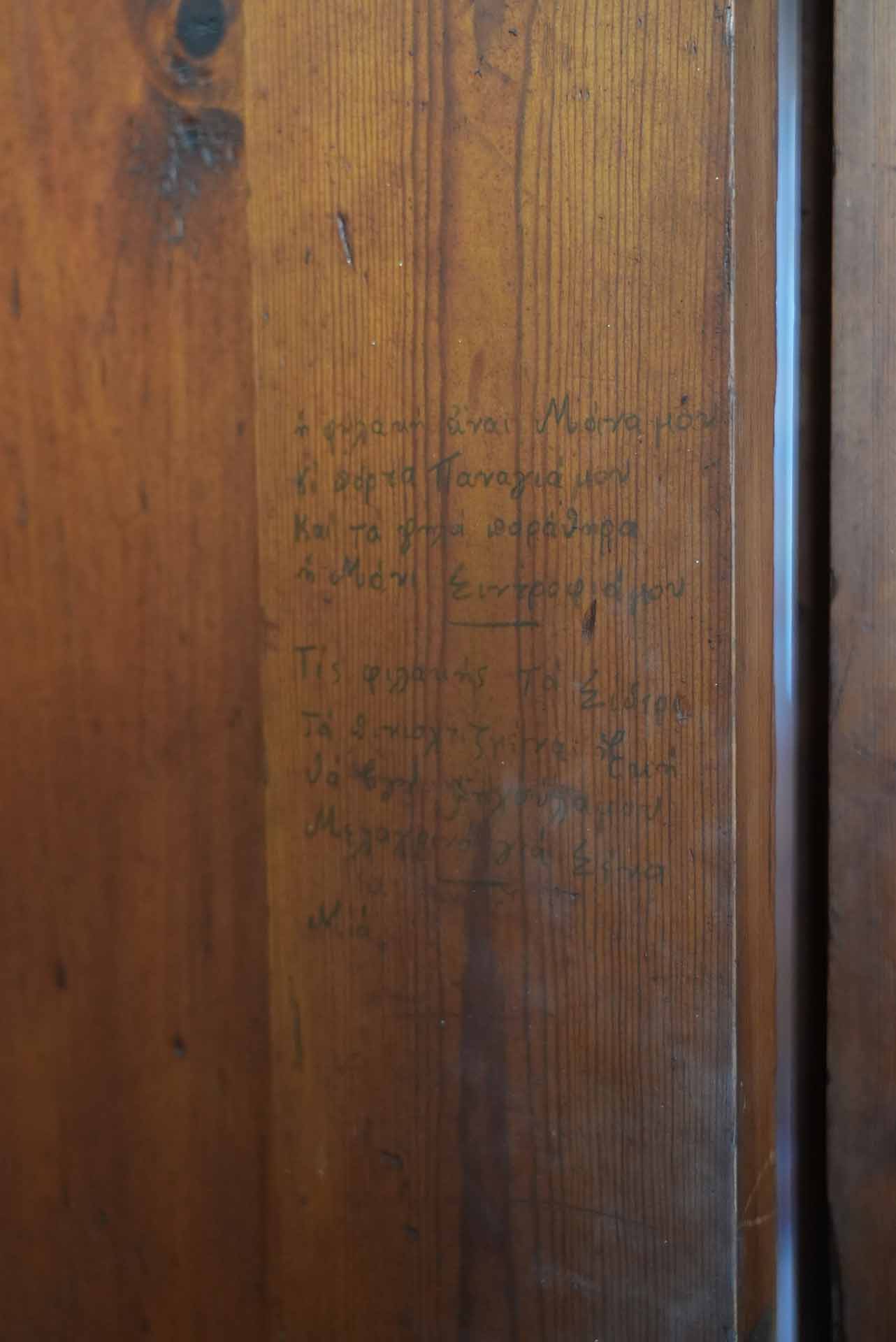The building that once served as the town hall of Agia Paraskevi in Lesvos, was constructed in the late 1930s as the residence of the Limnios family. Designed by self-taught architect Asimakis Fouskas, it stands as a striking example of neoclassical architecture and has been declared a protected monument.
During the German occupation, the building was requisitioned by the occupying forces and used as a prison. Even after the liberation of Greece, it continued to serve as a prison. Messages carved into its wooden interiors by prisoners remain visible as poignant reminders of its history. In the 1950s, the property was returned to Limnios’s daughter.
By the late 1990s, the building was acquired by the former municipality of Agia Paraskevi and served as its administrative office. Today, it houses services of the municipality of Western Lesvos but also features heirlooms and old photography exhibits.
Agia Paraskevi is one of the largest villages on Lesvos, known for its blend of traditional homes, semi-urban buildings, and elegant mansions showcasing neoclassical and Western European influences. These features reflect the village’s historical affluence, especially in the late 19th and early 20th centuries. In 2012, the Central Council of Modern Monuments declared the settlement a historic site for its architectural and urban significance.

























